Emerald ash borer: Small bug having big impact
The emerald ash borer is smaller than a penny, but will have a big impact on Albert Lea. This invasive species will cost the City of Albert Lea almost $800,000 over the next 20 years in treating and replacing ash trees in parks and boulevards.
Albert Lea has about 12,000 ash trees total. If not treated, the borer will kill all of them, changing the look of the community. The tree loss could also impact property values, quality of life, and human and environmental health.
Visit the links below for the city’s full management plan and tree professionals for assessing ash trees on private property.
Why is the emerald ash borer a threat?
This beetle feeds on ash trees, desiccating the trees and making them brittle to the point that they can topple over, creating a hazard for people and property.
How big a problem is the emerald ash borer?
This insect threatens 1 billion ash trees in Minnesota, where one in five trees is an ash tree.
If left unmanaged, the emerald ash borer can quickly overwhelm a city and local tree companies. Some cities have described it as a “wall of wood” hitting their community.
Is this beetle in Albert Lea?
The Minnesota Department of Agriculture has documented emerald ash borer in Albert Lea. Originally from Asia, they were first detected in Michigan in 2002 and are now in Minnesota. They were confirmed in Freeborn County, near Alden, in 2021.
What will be the economic and environmental impacts?
One expert estimates each tree provides $157 worth of benefits each year, considering that trees clean the air, prevent stormwater runoff, stabilize soils, and provide habitat, shade and wind breaks. Trees even reduce street maintenance, noise, crime and health care costs.
What is the City of Albert Lea doing?
Treating the best and replacing the rest – that’s the best way to describe the strategy at the local and state levels.
Albert Lea has about 12,000 ash trees, with about 9 percent on city property such as parks and boulevards. The Albert Lea Parks Department is implementing a management plan for the emerald ash borer on city property, with the help of a $100,000 grant from the Minnesota Department of Natural Resources.
The 20-year plan calls for managing 1,100 ash trees on city property:
-
- Protecting the best by treating 830 high-quality trees with an insecticide. Over 20 years, the treatment costs will total about $656,000, or $2,368 per tree, less than removing and replacing the trees.
- Replacing the rest by removing 270 low-quality trees and replacing them with a diverse mix of species, including birch, honey-locust, hackberry, ginkgo, buckeye, linden, ironwood, and disease-resistant elm trees.
Why isn’t the city planting maples or oaks?
The DNR grant agreement prohibits planting these trees because of the need for greater diversity, which helps prevent big impacts from diseases and insects that kill trees.
Is treatment more cost-effective than removal?
When this insect was first detected, the initial management strategy focused on removing and replacing trees. Over the last 20 years, the science has evolved and the treatment program is now effective both environmentally and economically. Treating a tree for 20 years is cheaper than replacing it.
In addition, treatment retains the trees’ benefits while allowing time to:
-
- Remove and grind the trees into mulch without being overwhelmed
- Replant the trees being removed
When is the city implementing its management plan?
City staff have already started planting the replacement trees and have removed the low-quality trees.
What about ash trees on private property?
The city urges property owners to have their ash trees evaluated for treatment or replacement by tree service companies licensed in Albert Lea.
Treatments
The Albert Lea City Council recently accepted the lowest bid from Maier Tree and Lawn of Rochester for treating ash trees on city property. Maier Tree and Lawn will also offer the bid price of $8 per inch of diameter at breast height (4.5 feet from the ground) to property owners in Albert Lea. Residents need to contact the firm by the end of July for the bid price.
City residents may dispose of ash wood at no charge
Residents within City of Albert Lea limits may dispose of ash wood for free at the Transfer Station, 2506 Richway Drive. This is for residents and ash wood only, no contractors or other tree species.
Property owners need to:
-
- Provide the Transfer Station with their name, address, phone number and driver’s license number
- Place ash wood in designated areas
How can I tell if I have ash trees on my property?
Compare your trees to the photos at right. Ash trees have bark with small and large diamond-shaped patterns. Look for compound leaves, which are leaflet groups joined by a stalk to a woody stem.
What should I do if I have ash trees?
Contact a tree service company to help you identify ash trees and assess their condition.
When deciding whether to treat or remove, ask yourself, “What’s it going to look like if the tree is gone?”
If deciding to remove the tree, be sure to plant a replacement to retain the tree’s benefits.
Avoid planting the new tree too close to the site of the ash tree because the remaining roots could be a problem. City staff plant new trees about 10 feet away from those removed.
How can I tell if my ash trees are infested?
-
- Year 1: No symptoms.
- Year 2: Branches start to die back on the tree top.
- Year 3: An abundance of water or sucker sprouts develop on trunk as a sign of stress.
- Year 4: D-shaped exit holes appear in the bark with galleries underneath. Galleries are large, about the size of a pencil eraser, and they go back and forth in a zigzag manner. At this point, it’s too late to save the tree.
Is the emerald ash borer harmful to humans?
While the borers do not attack people, falling branches from ash trees pose a risk to people. In addition, one study found that extensive losses of ash trees led to additional human deaths from cardiovascular and respiratory problems.
Are there alternative control methods besides insecticide?
Insecticide and replacement are the two optimal control methods at this time. Because the emerald ash borer is an invasive species, meaning it’s not native to the United States, it has no natural predators to control it. The insect has survived cold winters here, with temperatures needing to reach 40 degrees below zero to kill it.
How can I help support the management plan?
-
- Use firewood only from the surrounding area. Moving firewood can move the borer to a new area.
- Share this information with your neighbors, friends and family.
- Treat your best ash trees and replace the rest.
Where can I find more information?
Visit the Minnesota DNR website, Emerald ash borer, and the Department of Agriculture website, Emerald Ash Borer Program.

Watch this video for how to identify an ash tree.
Watch this video for how to spot the signs of emerald ash borer.
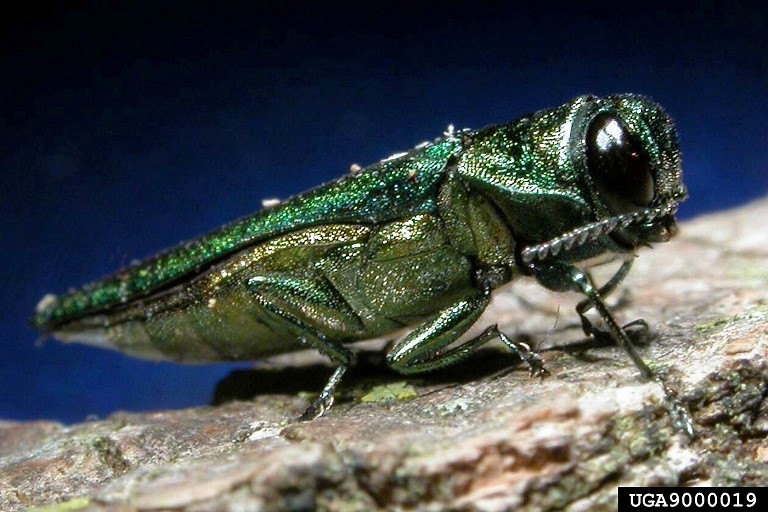
The emerald ash borer is only one-half inch long but will have a big impact on Albert Lea. (Photo by David Cappaert, Bugwood.org)
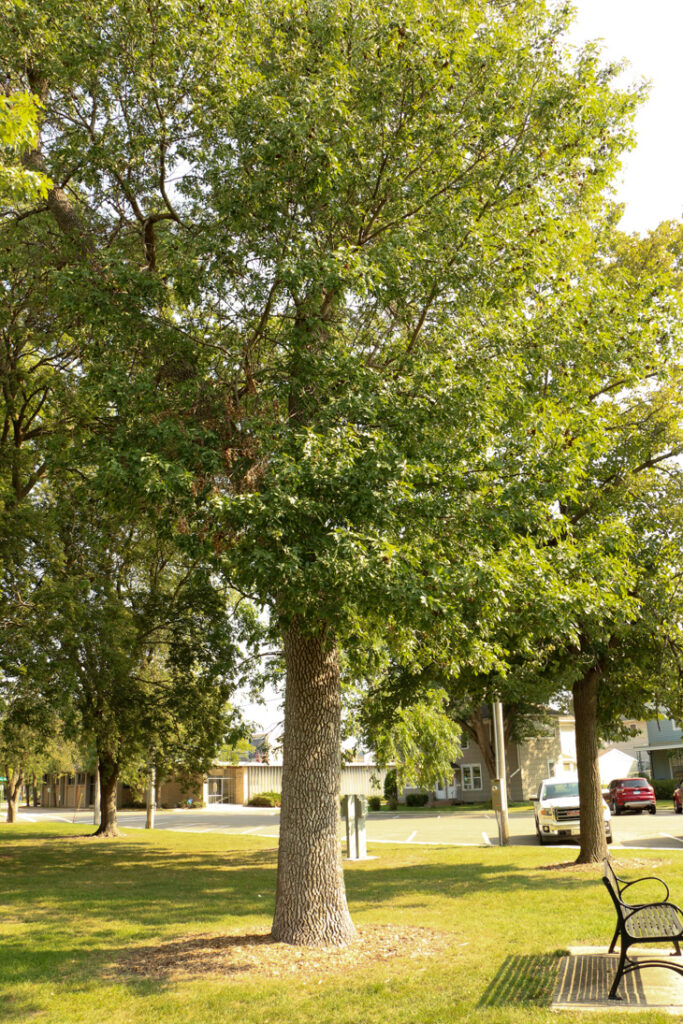
If not treated, the emerald ash borer will kill the 12,000 ash trees in Albert Lea, including this one in Central Park.
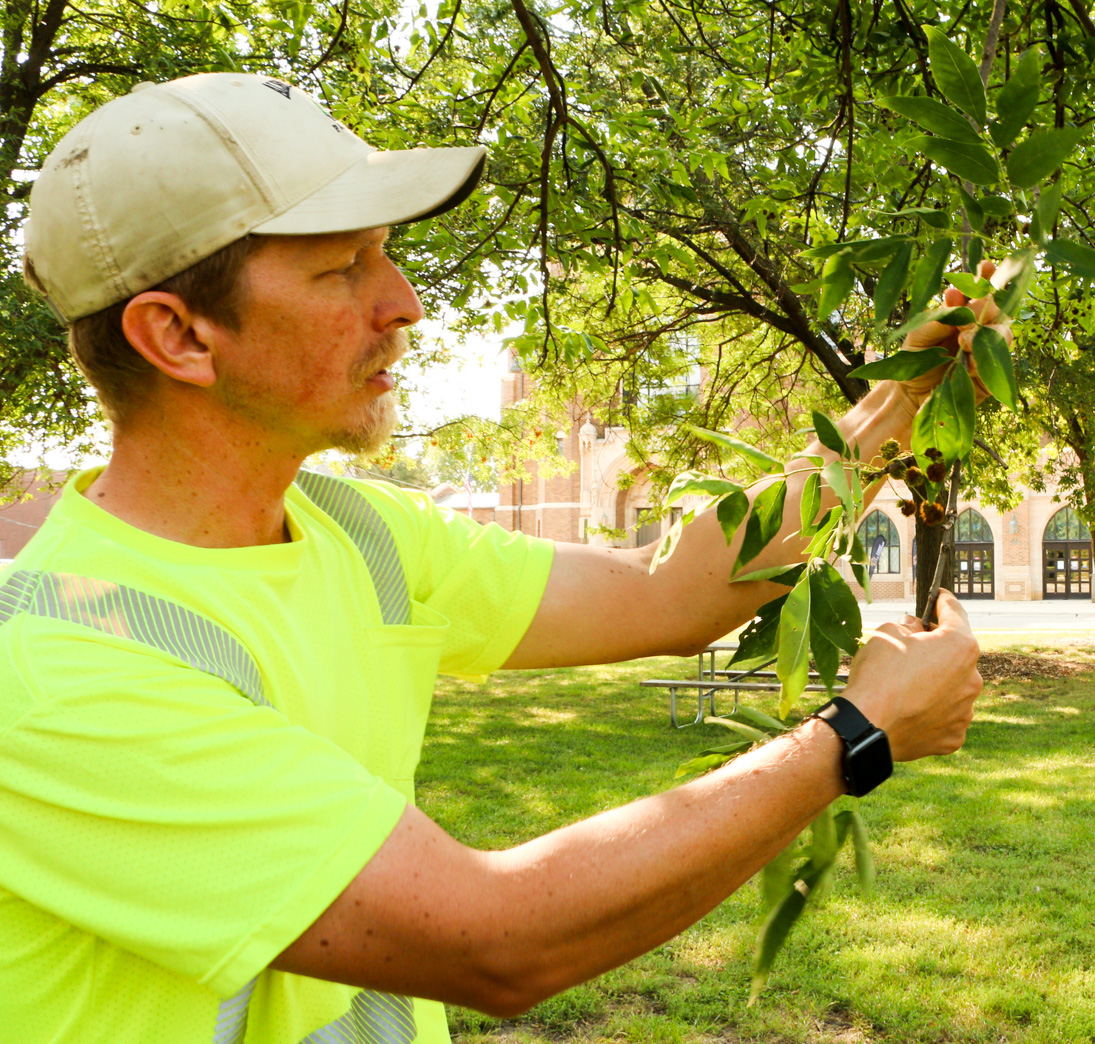
Ben Bangert, arborist with the City of Albert Lea Parks Department, shows how to identify an ash tree by its leaf cluster.

Ash tree leaves have smooth or fine-toothed edges.
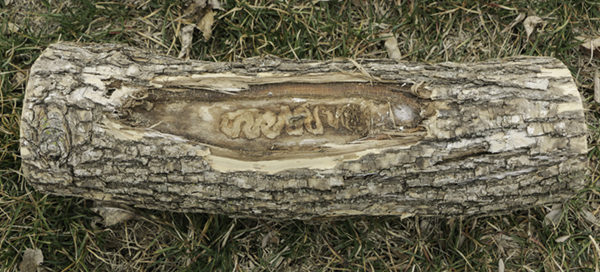
Emerald ash borer larvae tunnel under the bark, causing the bark to split open and reveal the S-shaped grooves underneath. At this stage, it’s too late to save the tree and it needs to be removed to prevent it from toppling over.
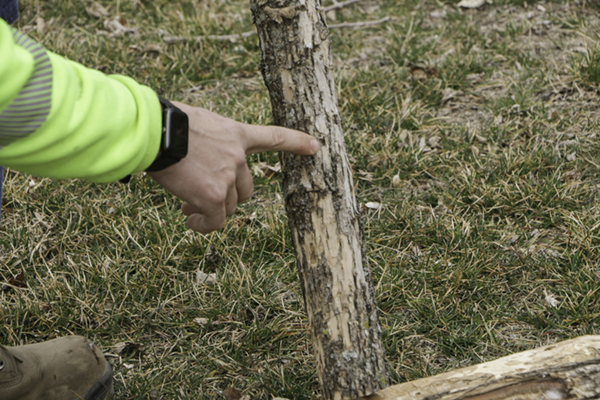
Woodpeckers feed on the larvae and the bird damage is often one of the first signs of emerald ash borer in a tree.
